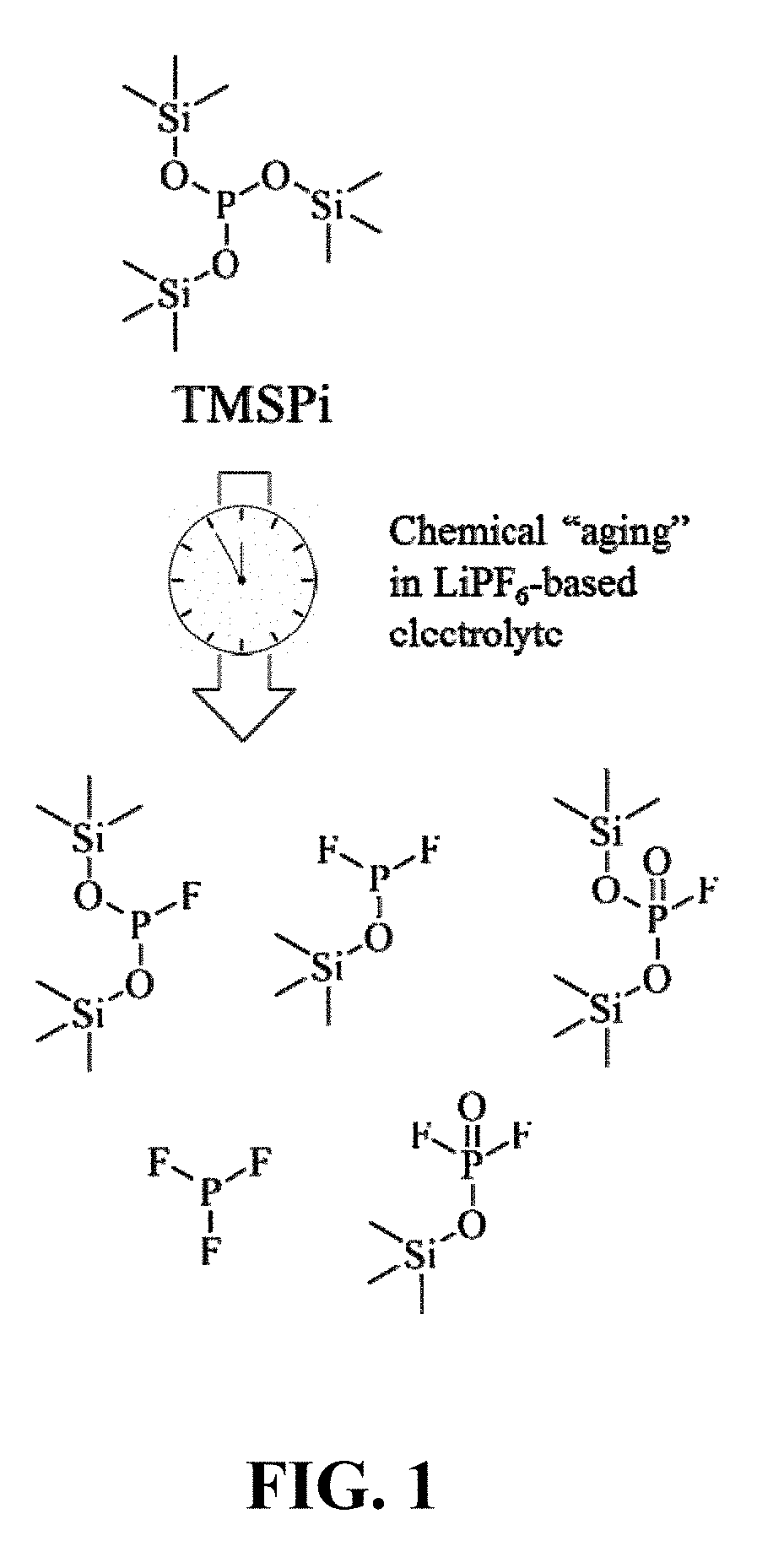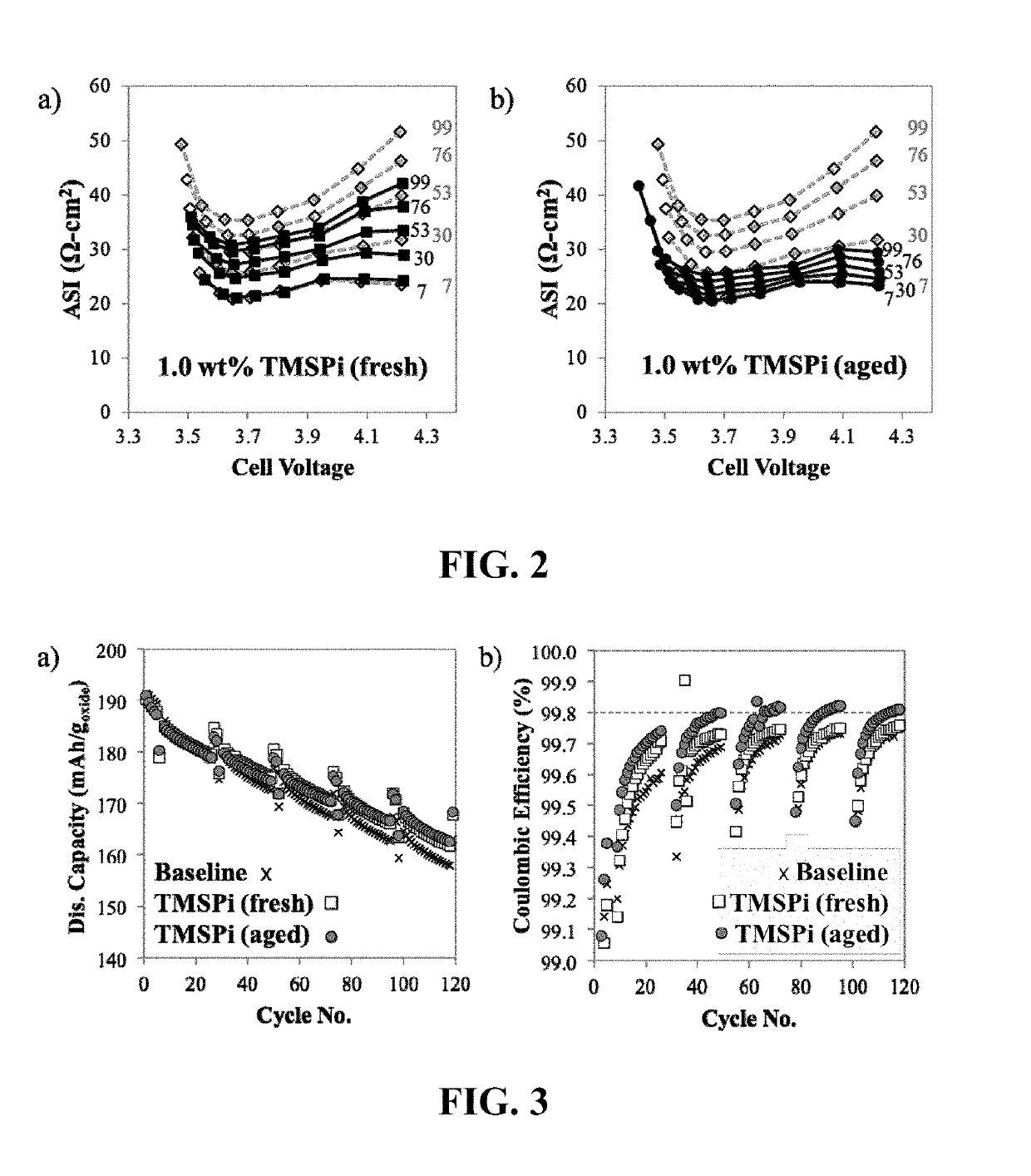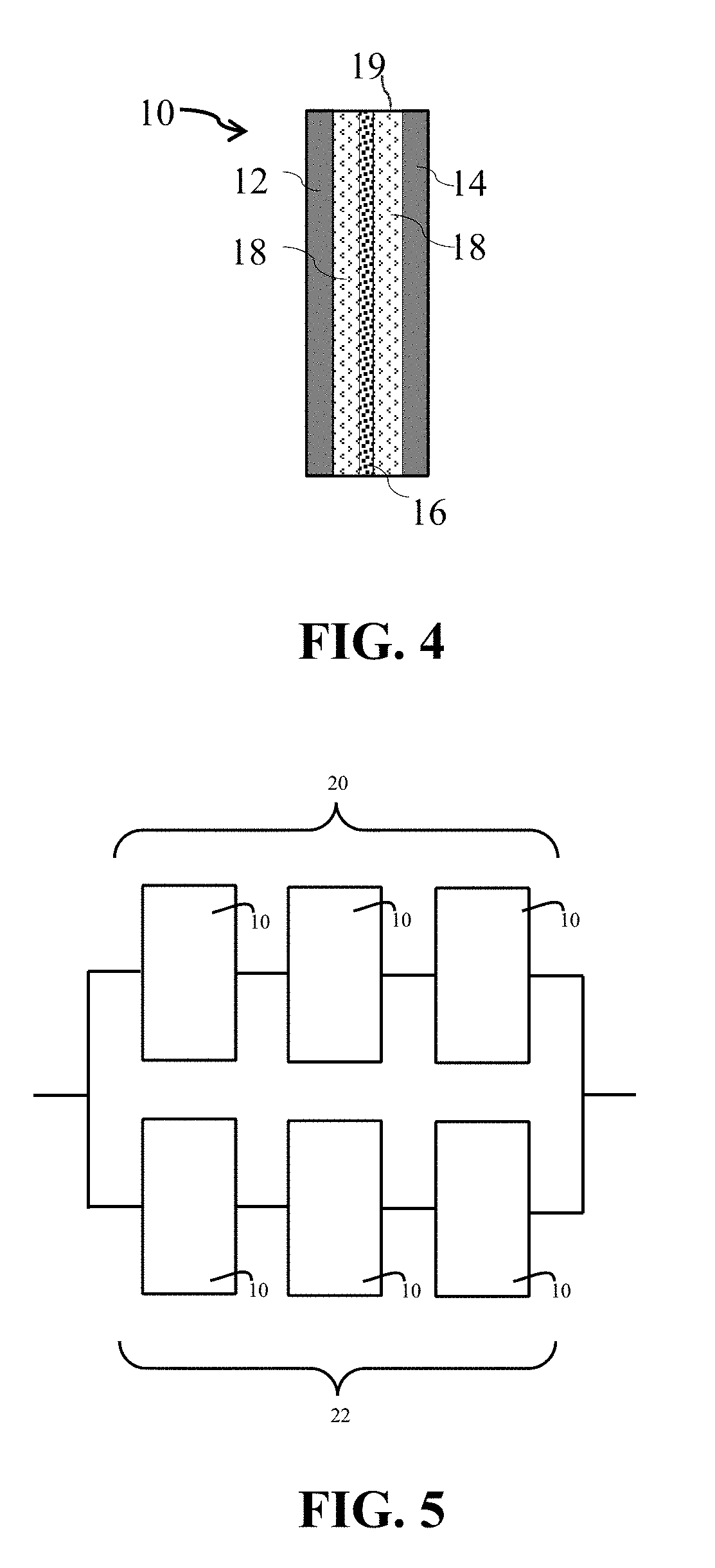Additives for high voltage lithium ion batteries
a lithium ion battery, high-voltage technology, applied in the manufacture of final products, batteries, cell components, etc., can solve the problems of significant, uncontrolled period, degraded performance, etc., to improve coulombic efficiency, prevent excessive impedance increase, and improve protective film
- Summary
- Abstract
- Description
- Claims
- Application Information
AI Technical Summary
Benefits of technology
Problems solved by technology
Method used
Image
Examples
example 1
Aging of TMSPi
[0040]An electrolyte solution containing the baseline electrolyte (1.2 M LiPF6 in EC / EMC, 3 / 7 wt / wt) and 1.0 wt % TMSPi was prepared in an Argon-atmosphere glove box. Time-dependent nuclear magnetic resonance (NMR) spectroscopy experiments were conducted on the electrolyte solutions over the course of one week. The spectrum of the fresh electrolyte (Day 0) contained peaks from TMSPi and the electrolyte salt LiPF6. At the end of Day 7, no TMSPi was observed, which indicates that the compound had reacted completely. In its place, various new species were observed, some of which are shown in FIG. 1 (indicated by the asterisks). These results indicate dynamic reaction processes during the chemical aging of the electrolyte. It is believed that the trimethylsilyl (TMS) groups of the TMSPi compound react with LiPF6 salt in the electrolyte to generate the new species.
[0041]FIG. 2 shows area specific impedance values during cycling of full cells with Li1.03Ni0.5Mn0.3Co0.2O2 as ...
example 2
Electrochemical Cell and Battery
[0045]FIG. 4 schematically illustrates a cross-sectional view of lithium-ion electrochemical cell 10 comprising cathode 12, and anode 14, with porous separator membrane 16 therebetween. Electrolyte 18, comprising a solution of a lithium salt in a non-aqueous solvent and the additive, and aged as described herein, contacts electrodes 12 and 14 and separator 16. The electrodes, separator and electrolyte are sealed within housing 19. FIG. 5 schematically illustrates a lithium-ion battery comprising a first cell bank 20 consisting of three series-connected electrochemical cells 10, and a second cell bank 22 consisting of three series-connected electrochemical cells 10, in which first bank 20 is electrically connected to second bank 22 in parallel.
PUM
| Property | Measurement | Unit |
|---|---|---|
| temperature | aaaaa | aaaaa |
| energy density | aaaaa | aaaaa |
| voltage | aaaaa | aaaaa |
Abstract
Description
Claims
Application Information
 Login to View More
Login to View More - R&D
- Intellectual Property
- Life Sciences
- Materials
- Tech Scout
- Unparalleled Data Quality
- Higher Quality Content
- 60% Fewer Hallucinations
Browse by: Latest US Patents, China's latest patents, Technical Efficacy Thesaurus, Application Domain, Technology Topic, Popular Technical Reports.
© 2025 PatSnap. All rights reserved.Legal|Privacy policy|Modern Slavery Act Transparency Statement|Sitemap|About US| Contact US: help@patsnap.com



